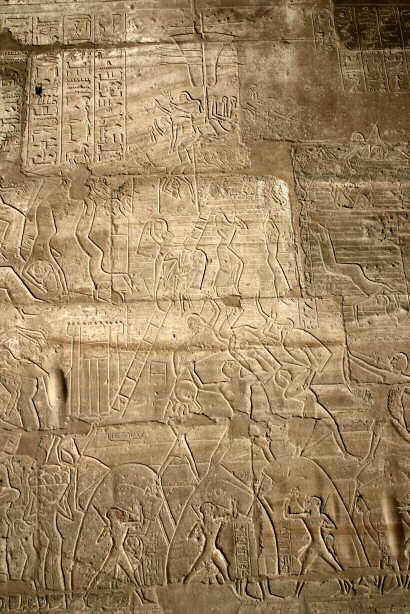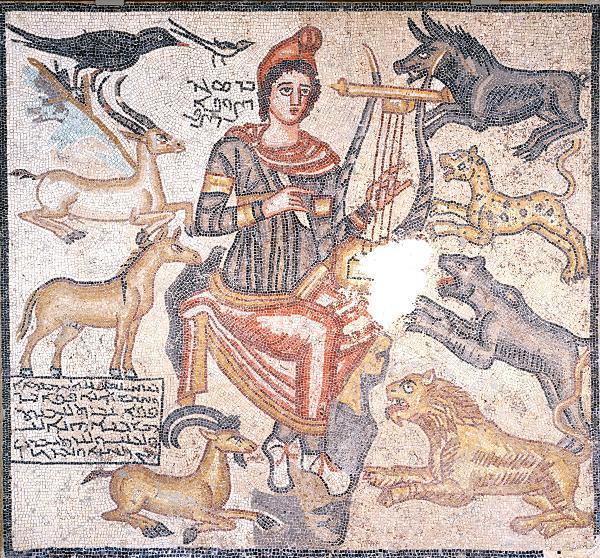|
Siege Of Edessa (610)
The siege of Edessa was a military Conflict in 609 or 610 during the Byzantine–Sasanian War of 602–628. After the fall of Amida (Diyarbakır) and Mardin, Sasanians besieged Edessa in 609 or 610. Some Christians are said to have believed it would be defended by Jesus himself on behalf of King Abgar V Abgar V (c. 1st century BC – c. AD 50), called Ukkāmā (meaning "the Black" in Syriac and other dialects of Aramaic), was the King of Osroene with his capital at Edessa. Background Abgar was described as "king of the Arabs" by the Roma ..., but the city fell after a while. References Sources * * * Battles of the Byzantine–Sasanian War of 602–628 Sieges involving the Byzantine Empire 610s in the Byzantine Empire 610s conflicts Sieges of the Roman–Persian Wars 610s in the Sasanian Empire Sieges involving the Sasanian Empire 610 {{Sasanian-stub ... [...More Info...] [...Related Items...] OR: [Wikipedia] [Google] [Baidu] |
Edessa
Edessa (; ) was an ancient city (''polis'') in Upper Mesopotamia, in what is now Urfa or Şanlıurfa, Turkey. It was founded during the Hellenistic period by Macedonian general and self proclaimed king Seleucus I Nicator (), founder of the Seleucid Empire. He named it after an ancient Macedonian capital. The Greek name (''Édessa'') means "tower in the water". It later became capital of the Kingdom of Osroene, and continued as capital of the Roman province of Osroene. In Late Antiquity, it became a prominent center of Christian learning and seat of the Catechetical School of Edessa. During the Crusades, it was the capital of the County of Edessa. The city was situated on the banks of the Daysan River (; ; ), a tributary of the Khabur, and was defended by Şanlıurfa Castle, the high central citadel. Ancient Edessa is the predecessor of modern Urfa (; ; ; ), in Şanlıurfa Province, Turkey. Modern names of the city are likely derived from Urhay or Orhay (), the site's S ... [...More Info...] [...Related Items...] OR: [Wikipedia] [Google] [Baidu] |
Sasanians
The Sasanian Empire (), officially Eranshahr ( , "Empire of the Iranians"), was an Iranian empire that was founded and ruled by the House of Sasan from 224 to 651. Enduring for over four centuries, the length of the Sasanian dynasty's reign over ancient Iran was second only to the directly preceding Arsacid dynasty of Parthia. Founded by Ardashir I, whose rise coincided with the decline of Arsacid influence in the face of both internal and external strife, the House of Sasan was highly determined to restore the legacy of the Achaemenid Empire by expanding and consolidating the Iranian nation's dominions. Most notably, after defeating Artabanus IV of Parthia during the Battle of Hormozdgan in 224, it began competing far more zealously with the neighbouring Roman Empire than the Arsacids had, thus sparking a new phase of the Roman–Iranian Wars. This effort by Ardashir's dynasty ultimately re-established Iran as a major power of late antiquity.Norman A. Stillman ''The Jew ... [...More Info...] [...Related Items...] OR: [Wikipedia] [Google] [Baidu] |
610s In The Sasanian Empire
61 may refer to: * 61 (number) * one of the years 61 BC, AD 61, 1961, 2061 * In some countries, a slang name for the Cyrillic letter Ы * '' 61*'', a 2001 American sports drama film * "Sixty One", a song by Karma to Burn from the album ''Mountain Czar'', 2016 * 61 Danaë, a main-belt asteroid * The international calling code for Australia Australia, officially the Commonwealth of Australia, is a country comprising mainland Australia, the mainland of the Australia (continent), Australian continent, the island of Tasmania and list of islands of Australia, numerous smaller isl ... See also List of highways numbered 61 {{Numberdis ... [...More Info...] [...Related Items...] OR: [Wikipedia] [Google] [Baidu] |
Sieges Of The Roman–Persian Wars
A siege () . is a military blockade of a city, or fortress, with the intent of conquering by attrition, or by well-prepared assault. Siege warfare (also called siegecrafts or poliorcetics) is a form of constant, low-intensity conflict characterized by one party holding a strong, static, defensive position. Consequently, an opportunity for negotiation between combatants is common, as proximity and fluctuating advantage can encourage diplomacy. A siege occurs when an attacker encounters a city or fortress that cannot be easily taken by a quick assault, and which refuses to surrender. Sieges involve surrounding the target to block provision of supplies and reinforcement or escape of troops (a tactic known as "investment"). This is typically coupled with attempts to reduce the fortifications by means of siege engines, artillery bombardment, mining (also known as sapping), or the use of deception or treachery to bypass defenses. Failing a military outcome, sieges can often be deci ... [...More Info...] [...Related Items...] OR: [Wikipedia] [Google] [Baidu] |
610s Conflicts
61 may refer to: * 61 (number) * one of the years 61 BC, AD 61, 1961, 2061 * In some countries, a slang name for the Cyrillic letter Ы * '' 61*'', a 2001 American sports drama film * "Sixty One", a song by Karma to Burn from the album ''Mountain Czar'', 2016 * 61 Danaë, a main-belt asteroid * The international calling code for Australia Australia, officially the Commonwealth of Australia, is a country comprising mainland Australia, the mainland of the Australia (continent), Australian continent, the island of Tasmania and list of islands of Australia, numerous smaller isl ... See also List of highways numbered 61 {{Numberdis ... [...More Info...] [...Related Items...] OR: [Wikipedia] [Google] [Baidu] |
Sieges Involving The Byzantine Empire
A siege () . is a military blockade of a city, or fortress, with the intent of conquering by attrition, or by well-prepared assault. Siege warfare (also called siegecrafts or poliorcetics) is a form of constant, low-intensity conflict characterized by one party holding a strong, static, defensive position. Consequently, an opportunity for negotiation between combatants is common, as proximity and fluctuating advantage can encourage diplomacy. A siege occurs when an attacker encounters a city or fortress that cannot be easily taken by a quick assault, and which refuses to surrender. Sieges involve surrounding the target to block provision of supplies and reinforcement or escape of troops (a tactic known as "investment"). This is typically coupled with attempts to reduce the fortifications by means of siege engines, artillery bombardment, mining (also known as sapping), or the use of deception or treachery to bypass defenses. Failing a military outcome, sieges can often be ... [...More Info...] [...Related Items...] OR: [Wikipedia] [Google] [Baidu] |
Battles Of The Byzantine–Sasanian War Of 602–628
A battle is an occurrence of combat in warfare between opposing military units of any number or size. A war usually consists of multiple battles. In general, a battle is a military engagement that is well defined in duration, area, and force commitment. An engagement with only limited commitment between the forces and without decisive results is sometimes called a skirmish. The word "battle" can also be used infrequently to refer to an entire operational campaign, although this usage greatly diverges from its conventional or customary meaning. Generally, the word "battle" is used for such campaigns if referring to a protracted combat encounter in which either one or both of the combatants had the same methods, resources, and strategic objectives throughout the encounter. Some prominent examples of this would be the Battle of the Atlantic, Battle of Britain, and the Battle of France, all in World War II. Wars and military campaigns are guided by military strategy, whereas batt ... [...More Info...] [...Related Items...] OR: [Wikipedia] [Google] [Baidu] |
Abgar V
Abgar V (c. 1st century BC – c. AD 50), called Ukkāmā (meaning "the Black" in Syriac and other dialects of Aramaic), was the King of Osroene with his capital at Edessa. Background Abgar was described as "king of the Arabs" by the Roman historian Tacitus, a near-contemporary source. The 5th-century Armenian historian Moses of Chorene depicted Abgar as an Armenian, but modern scholarly consensus agree that the Abgarids were in fact an Arab dynasty. Moses of Chorene notes that Abgar V's chief wife was Queen Helena of Adiabene, but according to the contemporary Jewish historian Josephus she was the wife of King Monobaz I of Adiabene. Letter of Abgar to Jesus Abgar V is said to be one of the first Christian kings, having been converted to the faith by Thaddeus of Edessa, one of the seventy disciples. The church historian Eusebius recorded that the Edessan archives contained a copy of a correspondence exchanged between Abgar of Edessa and Jesus. The correspondence ... [...More Info...] [...Related Items...] OR: [Wikipedia] [Google] [Baidu] |
Mardin
Mardin (; ; romanized: ''Mārdīn''; ; ) is a city and seat of the Artuklu District of Mardin Province in Turkey. It is known for the Artuqids, Artuqid architecture of its old city, and for its strategic location on a rocky hill near the Tigris River. The old town of the city is under the protection of UNESCO, which forbids new constructions to preserve its façade. The city had a population of 129,864 in 2021. The population is a mix of Kurds, Arabs, Mhallami, and Assyrian people, Assyrians. History Antiquity and etymology A legal document from Neo-Assyrian period has one mention of a road leading to Mardiānê - which is believed to be modern-day Mardin - indicating that the name has roots dating back to at least the Neo-Assyrian period. The city survived into the Syriac Christian period as the name of Mount Izla on which in the early 4th century stood the monastery of Nisibis, housing seventy monks. In the Roman period, the city itself was known as ''Marida'' (''Merid ... [...More Info...] [...Related Items...] OR: [Wikipedia] [Google] [Baidu] |
Şanlıurfa
Urfa, officially called Şanlıurfa (), is a city in southeastern Turkey and the capital of Şanlıurfa Province. The city was known as Edessa from Hellenistic times and into Christian times. Urfa is situated on a plain about east of the Euphrates. Its climate features extremely hot, dry summers and cool, moist winters. About northeast of the city is the famous Neolithic site of Göbekli Tepe, the world's oldest known temple, which was founded in the 10th millennium BC. The area was part of a network of the first human settlements where the agricultural revolution took place. Because of its association with Jewish, Christian, and Islamic history, and a legend according to which it was the hometown of Abraham, Urfa is nicknamed the "City of Prophets." Religion is important in Urfa. The city "has become a center of fundamentalist Islamic beliefs" and "is considered one of the most devoutly religious cities in Turkey". The city is located 30 miles from the Atatürk Dam, a ... [...More Info...] [...Related Items...] OR: [Wikipedia] [Google] [Baidu] |
Diyarbakır
Diyarbakır is the largest Kurdish-majority city in Turkey. It is the administrative center of Diyarbakır Province. Situated around a high plateau by the banks of the Tigris river on which stands the historic Diyarbakır Fortress, it is the administrative capital of the Diyarbakır Province of southeastern Turkey. It is the second-largest city in the Southeastern Anatolia Region. As of December 2024, the Metropolitan Province population was 1 833 684 of whom 1 164 940 lived in the built-up (or metro) area made of the 4 urban districts ( Bağlar, Kayapınar, Sur and Yenişehir). Diyarbakır has been a main focal point of the conflict between the Turkish state and various Kurdish separatist groups, and is seen by many Kurds as the de facto capital of Kurdistan. The city was intended to become the capital of an independent Kurdistan following the Treaty of Sèvres, but this was disregarded following subsequent political developments. On 6 February 2023 Diyarbakır ... [...More Info...] [...Related Items...] OR: [Wikipedia] [Google] [Baidu] |







